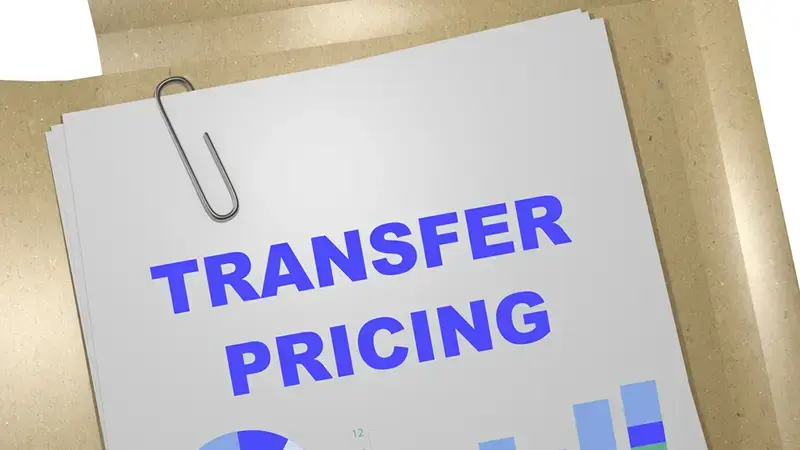Operational Transfer Pricing: Best Practices for Multinational Success
Operational transfer pricing is a cornerstone for ensuring compliance, fairness, and efficiency in intercompany transactions for goods and services...

In today’s global economy, transfer pricing documentation is essential for multinationals to comply with international tax laws and mitigate legal risks in cross-border transactions. This article explores the key components of transfer pricing documentation, including the Master File and Local File, alongside best practices and common pitfalls. Companies can ensure compliance, improve efficiency, and reduce regulatory risk by understanding these requirements and implementing effective strategies.
|
Quick Facts |
|
CONTENT INDEX
It refers to the records and reports prepared by multinational companies to demonstrate that transactions involving goods and services between related entities, such as parent companies and subsidiaries, comply with applicable transfer pricing regulations. These regulations require intercompany transactions to be conducted at “arm’s length” prices, meaning the terms must align with those that would apply between unrelated parties in the same or similar circumstances. In the US, the IRS determines whether a controlled transaction meets the arm's length standard by considering the outcomes that would occur if unrelated parties engaged in the same transaction under the same circumstances.
Transfer pricing documentation is the foundation for international tax compliance. By having robust and accurate records, during a transfer pricing audit, global businesses can show compliance with the arm's length principle, as defined in Article 9 of the OECD Model Tax Convention. This principle ensures that transactions between related entities are treated as if they were conducted between independent parties, which helps in the fair collection of taxes and reduces the risk of double taxation for multinational corporations. These documents also provide a framework to explain how intercompany pricing is aligned with global and local tax laws.
Transfer pricing documentation regulations are rules established by tax authorities globally to ensure that multinational enterprises (MNEs) comply with the “arm’s length principle.” The transfer pricing practice is an accounting methodology utilized by divisions or subsidiaries of a company to charge each other for goods and services, helping in tax savings by distributing earnings across different subsidiaries. This principle mandates that transactions between related entities within an MNE group are conducted as if the entities were independent, applying market-based terms and conditions that reflect the market price.
The Organization for Economic Co-operation and Development (OECD) provides a widely accepted framework for transfer pricing documentation. These guidelines are often adopted or adapted by individual countries in their transfer pricing regulations.
Master File: Includes high-level information about the MNE group’s global operations, including its structure, economic activities, and transfer pricing policies.
Local File: Provides detailed information on intercompany transactions in a specific jurisdiction.
Country-by-Country Reporting (CbCR): Summarizes global allocation of income, taxes, and business activities by jurisdiction.
These three-tiered documentation requirements were introduced as part of the OECD’s Base Erosion and Profit Shifting (BEPS) Action Plan (Action 13).
The UN also offers guidance on transfer pricing, primarily targeted at developing countries. While similar to OECD standards, the UN emphasizes simplified approaches and alternatives to minimize compliance burdens in resource-constrained countries.
Countries and regional organizations may enforce specific rules tailored to their tax policies, often based on or influenced by the OECD framework.
United States (IRC §482): Requires transfer pricing documentation to demonstrate that intercompany pricing reflects an arm’s length standard. This means the results of a controlled transaction should align with what would be realized by unrelated parties engaging in the same transaction under similar circumstances. Failure to comply can lead to penalties.
European Union (EU Transfer Pricing Documentation): Many EU member states follow OECD guidelines but add country-specific requirements. For example, the EU Joint Transfer Pricing Forum promotes consistent application.
India: Requires extensive transfer pricing documentation under its Income Tax Act, with a focus on specified domestic and international transactions.
Brazil: Uses a unique fixed-margin method for certain transactions, deviating significantly from OECD principles.
China: Imposes strict documentation rules emphasizing value creation, particularly in cases of intangible assets and services.
Other Countries: most countries have adopted similar regulations influenced by the OECD framework.
Failure to comply with transfer pricing documentation regulations can result in:
Penalties: Monetary fines, interest on underpaid taxes, or additional taxes.
Adjustments: Tax authorities may adjust income, expenses, or deductions.
Reputational Risks: Increased scrutiny or public exposure in jurisdictions with disclosure requirements.
Digital Economy: Increased focus on transfer pricing for digital services and intangibles.
Transparency: Growing emphasis on detailed reporting.
Harmonization: Efforts to align national regulations with international standards.
Multinational enterprises must regularly review and update their documentation to comply with evolving regulations across jurisdictions.
Transfer pricing documentation is typically divided into three primary components: the Master File, the Local File, and the Country-by-Country Report (CbCR). These documents collectively provide a comprehensive view of a multinational corporation’s global and local operations, ensuring compliance with transfer pricing regulations. By maintaining robust documentation, businesses can effectively manage tax liabilities and address regulatory challenges.
The Master File serves as a high-level document offering tax authorities an overview of a multinational’s global operations. It includes details about subsidiary and affiliate companies, the group’s organizational structure, key value drivers, intercompany transactions, and transfer pricing policies, all aligned with OECD guidelines.
This document is crucial for demonstrating how the company aligns its global operations with international tax laws. A well-prepared Master File not only reduces the risk of audits but also facilitates coordination across borders, providing a unified perspective on the company’s global activities.
The Local File focuses on intercompany transactions within a specific jurisdiction. It contains detailed information about local entities, their roles, and the determination of transfer prices based on the arm’s length principle. This principle ensures that transactions between related parties mirror those conducted between independent entities under similar conditions, promoting fair tax collection and preventing tax avoidance through overpricing or underpricing.
Transfer pricing reports are crucial in demonstrating compliance with the arm's length principle, meeting IRS requirements, and aiding in efficient risk assessments and audits.
By providing jurisdiction-specific insights, the Local File ensures compliance with local tax laws and complements the global perspective outlined in the Master File. Accurate and detailed Local Files are essential for avoiding penalties and fostering trust with tax authorities.
CbCR promotes transparency by requiring multinationals to report key financial and tax data for each jurisdiction. This includes metrics such as revenues, profits, taxes paid, and economic activities, offering tax authorities a clear view of global operations.
Consistent and precise CbCR enables tax authorities to assess transfer pricing risks and ensure fair taxation. Multinational corporations must prepare these reports diligently to comply with OECD BEPS Action 13 requirements, avoid disputes, and maintain alignment with global tax transparency initiatives.
Together, these components form the foundation of effective transfer pricing documentation, helping businesses navigate regulatory complexities while minimizing risks.

Consistency across Files: Ensure Master File, Local Files, and CbCR are aligned in their presentation of intercompany transactions and pricing. Discrepancies between these files will attract more scrutiny from tax authorities.
Regular Updates: Tax laws and business operations change frequently. Update documentation regularly to reflect current practices and laws.
Detailed Functional Analysis: Include a functional analysis of each entity’s roles, risks, and assets to justify the chosen transfer pricing method.
Use of Reliable Data: Base your analysis on accurate, complete, and current data to avoid penalties for misrepresentation or incomplete documentation.
By following these best practices MNCs can be compliant, reduce risks, and be ready for long-term success in a complex global tax landscape.
Managing transfer price documentation is complicated especially for MNCs with different tax regulations in each country. Compliance with each country’s rules is key to avoiding inconsistencies and penalties. Proper transfer pricing documentation can result in significant tax savings by being compliant and optimizing tax liabilities. Intercompany transactions within the same company can be optimized for tax liabilities by managing transfer pricing effectively. Data collection, consistency, coordination, and compliance with local laws are the common challenges. Here are some of the challenges:
Data Collection and Management: Managing a large volume of data from multiple entities is a big challenge. MNCs need to gather and consolidate information on intercompany transactions across subsidiaries and jurisdictions. Automated tools can help in data collection, reduce manual errors and ensure data accuracy. These tools can also integrate with financial systems to simplify compliance.
Consistency and Coordination: Master File, Local Files, and CbCR must be aligned to ensure consistency across all files. Discrepancies will attract tax authorities' attention. Technology-driven solutions can help in collaboration across departments and ensure global and local file alignment.
Different Jurisdictions: Each country has different transfer pricing rules and requirements. MNCs must tailor their policies to local laws while adhering to the arm’s length principle. Understanding these differences and having accurate country-specific documentation is key to avoiding double taxation and compliance issues.
By addressing these challenges early on, companies can simplify their transfer pricing process, reduce risks, and be compliant across global operations.
Technology plays an increasingly critical role in streamlining the preparation, management, and compliance of transfer pricing documentation. With growing regulatory complexity and stringent reporting requirements, leveraging technology can enhance accuracy, efficiency, and transparency in transfer pricing processes.
Automation of Compliance Processes
Automates data collection, analysis, and report generation.
Reduces manual errors and ensures timely compliance with local and international regulations.
Data Integration
Consolidates data from various sources such as ERP systems (e.g., SAP, Oracle), accounting software, and business management platforms.
Provides a unified view of financial transactions across jurisdictions.
Benchmarking and Comparability Analysis
Uses databases and software to benchmark intercompany transactions against independent transactions.
Automates functional and risk analyses by comparing financial metrics.
Dynamic Country-by-Country Reporting (CbCR)
Facilitates automated generation of CbCR templates in line with OECD or local standards.
Enables real-time adjustments to reflect regulatory changes.
Scenario Analysis and Simulation
Simulates "what-if" scenarios to test the impact of various transfer pricing policies.
Assesses potential risks and mitigates tax exposure before finalizing strategies.
Artificial Intelligence (AI) and Machine Learning
Enhances data analysis by identifying patterns, anomalies, and risks in intercompany transactions.
Predicts potential audit risks based on historical data and regulatory trends.
Robotic Process Automation (RPA)
Automates repetitive tasks, such as extracting and validating data for documentation.
Streamlines workflows for creating Master Files, Local Files, and CbCR.
Blockchain
Ensures secure and transparent tracking of intercompany transactions.
Provides an immutable audit trail for tax authorities.
Cloud-Based Solutions
Enables centralized storage and sharing of documentation for global teams.
Facilitates collaboration and ensures version control for compliance across multiple jurisdictions.
Data Visualization Tools
Presents complex financial and transactional data in easy-to-understand charts and dashboards.
Highlights compliance gaps or potential risks visually for decision-makers.
In summary, transfer pricing documentation is a cornerstone of compliance for multinational corporations navigating the complexities of international taxation. By adhering to the arm’s length principle and maintaining comprehensive records such as the Master File, Local File, and Country-by-Country Report, companies can ensure transparency and alignment with global regulations. While challenges such as data management, consistency, and jurisdiction-specific requirements persist, the adoption of technology and best practices can significantly mitigate these issues. With a proactive approach to compliance and the integration of advanced tools, businesses can reduce regulatory risks, enhance operational efficiency, and establish a robust framework for sustainable global operations.
We are dedicated to delivering customized transfer pricing solutions that align with your business’s global objectives while ensuring compliance with local and international tax regulations.
Our firm is also dedicated to providing individual tax services, business tax services, international tax services, expatriate tax services, SAP Business One, entity management, human capital, and audit and assurance services.
Here is a comprehensive list of Transfer Pricing Services offered by us:
Transfer Pricing Documentation
Transfer Pricing Benchmark Study & Analysis
Operational Transfer Pricing
Transfer Pricing Risk Identification & Assessment
Transfer Pricing Policy Design
Audit and Compliance Support
Global Transfer Pricing Compliance Monitoring
Intercompany Agreement Review and Drafting
The purpose of transfer pricing documentation is to demonstrate compliance with the arm's length principle for related-party transactions, thus managing tax implications and mitigating legal risks.
The key components of a master file include the organizational structure, locations of operations, profit drivers, descriptions of business activities, intangible assets, intercompany financing, and the overall financial position. These elements are essential for understanding and managing the organization's framework effectively.
Country-by-country reporting (CbCR) enhances transparency for multinational enterprises by mandating detailed reporting on income, taxes paid, and economic activities in various jurisdictions. This increased transparency results in heightened scrutiny from tax authorities.
Common challenges in preparing transfer pricing documentation involve difficulties in data collection and management, ensuring consistency and coordination, and navigating varying jurisdictional requirements. Addressing these issues is crucial for compliance and accuracy.
Technology significantly improves transfer pricing documentation by automating data collection and utilizing specialized software, thereby increasing efficiency and accuracy while minimizing compliance risks. This streamlined process ultimately saves valuable time and resources.

Operational transfer pricing is a cornerstone for ensuring compliance, fairness, and efficiency in intercompany transactions for goods and services...

Expanding globally offers immense opportunities but also introduces significant transfer pricing risks for multinational corporations that can...

For global companies, matching intercompany transactions and pricing to the value created within their operations is key to both compliance and cost...